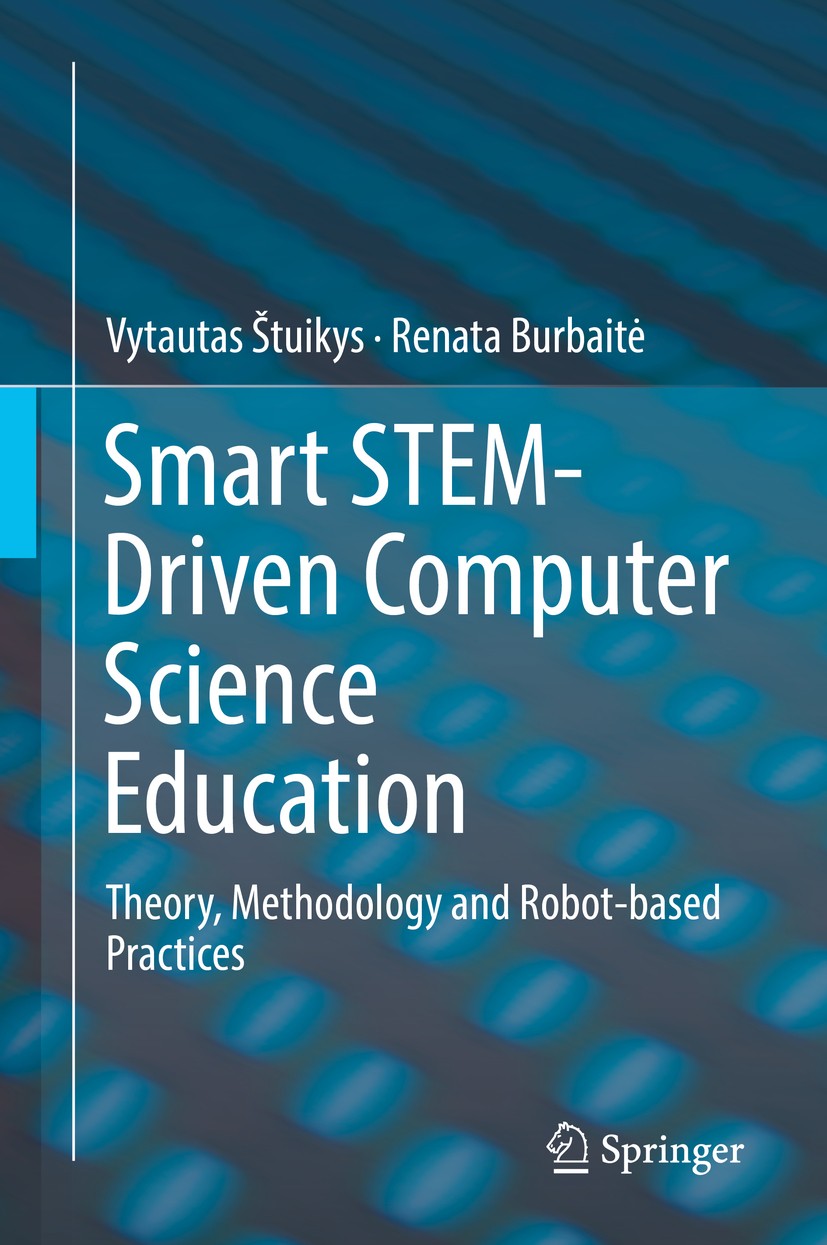| 书目名称 | Smart STEM-Driven Computer Science Education | | 副标题 | Theory, Methodology | | 编辑 | Vytautas Štuikys,Renata Burbaitė | | 视频video | http://file.papertrans.cn/869/868945/868945.mp4 | | 概述 | Reviews exhaustively trends and challenges of the STEM paradigm in the context of K-12 education.Provides a framework of integrating STEM into Computer Science (CS) education based on using robotics.T | | 图书封面 |  | | 描述 | .At the centre of the methodology used in this book is STEM learning variability space that includes STEM pedagogical variability, learners’ social variability, technological variability, CS content variability and interaction variability. To design smart components, firstly, the STEM learning variability space is defined for each component separately, and then model-driven approaches are applied. The theoretical basis includes feature-based modelling and model transformations at the top specification level and heterogeneous meta-programming techniques at the implementation level..Practice includes multiple case studies oriented for solving the task prototypes, taken from the real world, by educational robots. These case studies illustrate the process of gaining interdisciplinary knowledge pieces identified as S-knowledge, T-knowledge, E-knowledge, M-knowledge or integrated STEM knowledge and evaluate smart components from the pedagogical and technological perspectives based ondata gathered from one real teaching setting. .Smart STEM-Driven Computer Science Education:. .Theory, Methodology and Robot-based Practices. outlines the overall capabilities of the proposed approach and als | | 出版日期 | Book 2018 | | 关键词 | STEM-driven CS Education; Robot-based Smart Educational Environment; Generative Learning Scenarios; Per | | 版次 | 1 | | doi | https://doi.org/10.1007/978-3-319-78485-4 | | isbn_softcover | 978-3-030-08710-4 | | isbn_ebook | 978-3-319-78485-4 | | copyright | Springer International Publishing AG, part of Springer Nature 2018 |
The information of publication is updating

|
|
 |Archiver|手机版|小黑屋|
派博传思国际
( 京公网安备110108008328)
GMT+8, 2025-12-17 22:46
|Archiver|手机版|小黑屋|
派博传思国际
( 京公网安备110108008328)
GMT+8, 2025-12-17 22:46


